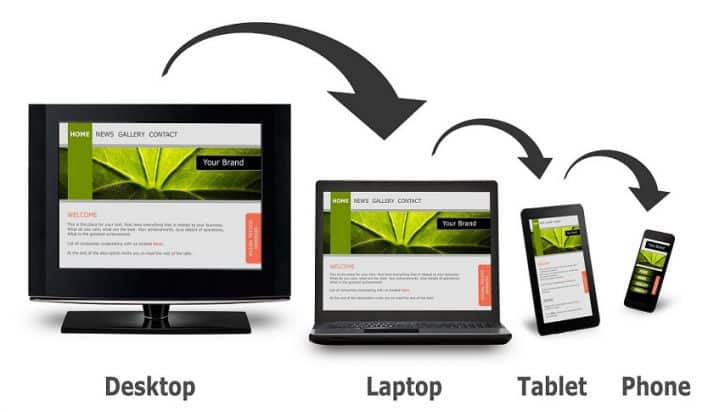Enhancing Website Engagement: Integrating Social Media
Integrating Social Media into Websites. Increasing participation, broadening reach, and boosting traffic are all goals that may be accomplished through the incorporation of social media into websites, which has become an essential component in the current digital world. Website proprietors, companies, and brands can reap major benefits from tapping into this massive network, which is comprised of billions of individuals who are active on numerous social platforms on a regular basis. Let’s go deeper into the ways in which incorporating social media into your website can improve both its performance and the user experience. https://divershttps://diversewebsitedesign.com.au/cheap-website-design/ewebsitedesign.com.au/medical-web-design/
The Power of Social Sharing
Website visitors are able to easily share material that they find valuable across their social networks thanks to the social sharing capability presented by the website. The implementation of conspicuous social sharing buttons that are strategically positioned alongside blog posts, articles, or items encourages visitors to increase the reach of your material. Enabling seamless sharing options helps to nurture organic marketing and brings people back to your website. This is true whether you are sharing a thought-provoking blog piece, a great product image, or an engaging video.

Implementing Social Login
Through the implementation of social login capability, the process of user registration and login can be substantially simplified. When you give visitors the ability to sign in using their existing social network accounts, you eliminate the effort of creating new credentials, which in turn reduces friction and improves the user experience. In addition, social login gives you access to valuable user data, which enables you to personalize content, tailor recommendations, and obtain insights into the interests and demographics of your audience. Integrating Social Media into Websites
Embedding Social Feeds
By immediately integrating live social media feeds into your website, you can provide visitors with dynamic and real-time information updates, which will keep them engaged and informed through your website. When you embed social feeds, you lend a feeling of authenticity to your content and promote a sense of community. This is true whether you are presenting the most recent tweets, Instagram posts, or Facebook updates. Not only does this strategy improve the content of your website, but it also encourages users to investigate your social accounts, which in turn contributes to increased interaction across multiple platforms and loyalty to your company.

Encouraging User-generated Content
Utilize the potential of user-generated content (UGC) by including social media feeds that feature content that was made by your audience. Whether it’s user-generated content (UGC) in the form of testimonials, reviews, or images and videos supplied by users, showing UGC makes your brand appear more genuine and credible. Through the process of selecting and displaying user-generated material on your website, you can cultivate a sense of community and trust while simultaneously encouraging others to contribute, so substantially expanding the reach and effect of your business.
Social Proof and Trust Building
There is a correlation between displaying social proof features on your website, such as follower counts, likes, shares, and testimonials, and gaining the confidence and credibility of your website users. The purpose of social proof is to validate the value proposition and quality of your brand, which in turn influences purchasing decisions and drives conversions. The incorporation of social proof widgets, badges, or testimonials in a systematic manner throughout your website serves to bolster the authority and dependability of your brand, ultimately leading to an increase in user trust and confidence.
Facilitating Social Engagement
Through the incorporation of commenting systems that enable users to connect with one another and share their ideas directly on your website, you can facilitate social engagement in a seamless manner. By enabling comments, you may encourage conversations, feedback, and user-generated material. This is true regardless of whether you are using Disqus, Facebook Comments, or any other third-party plugin. Engaging with your audience in meaningful conversations not only helps to establish relationships, but it also drives repeat visits and helps to foster a feeling of community around your business.

Optimizing for Social Sharing
The content and design of your website should be optimized for social sharing. This can be accomplished by ensuring that pages load quickly, that images are optimized for social platforms, and that metadata is appropriately formatted for increased visibility on social media. Increasing click-through rates and engagement can be accomplished by implementing open graph tags, Twitter cards, and other social meta tags. This allows for rich previews to be displayed when the content is shared on social sites. In addition, the incorporation of social share counters and tracking tools enables you to evaluate patterns of sharing and optimize content based on the preferences of the audience.
Conclusion
When you integrate social media into your website, you are not simply adding buttons or widgets; rather, you are generating meaningful relationships, encouraging interaction, and expanding the reach of your business. Through the utilization of social sharing, the incorporation of live feeds, the presentation of user-generated content, and the utilization of social proof, it is possible to improve the user experience, establish trust, and increase traffic and conversions. To open up new doors of opportunity and propel your website toward success in the digital era, you should take advantage of the potential that social media integration provides.





